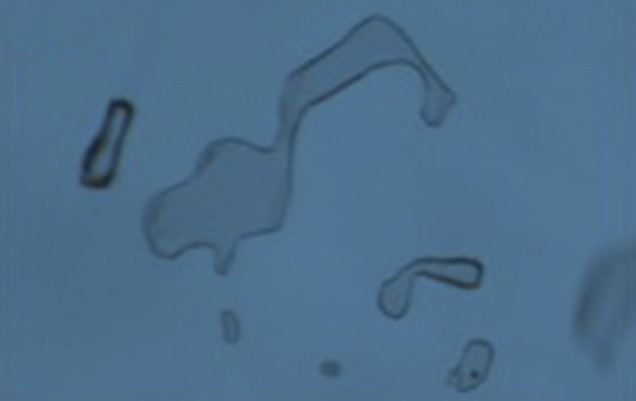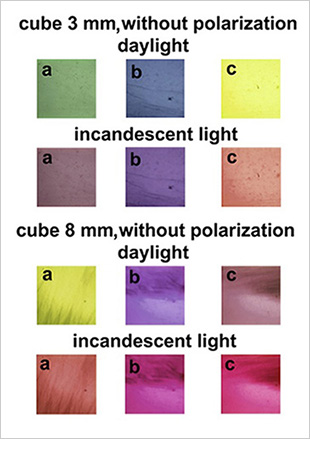Challenges in Orienting Alexandrite: The Usambara and Other Optical Effects in Synthetic HOC-Grown Russian Alexandrite

Dr. Schmetzer and his coauthors contribute another gemological description of a unique source of synthetic alexandrite, the chromium-bearing variety of chrysoberyl. These crystals, grown in Russia since the late 1980s and similar in color to natural alexandrites from the Hematita deposit in Minas Gerais, Brazil, were formed using a direct melt gradient technique. This alexandrite crystal growth process, developed by Dr. Vladimir Gurov, uses the horizontally oriented crystallization (HOC) method. The crystals have all been grown along the b-axis in molybdenum crucibles that contain both the melt and the solidified portion.
These crystals, which range up to 450 g, are used both for laser applications and gem-quality synthetics. Since 1994, they have been produced for the gem market in a joint venture with the Tairus company in Novosibirsk. Among their distinguishing inclusions are curved growth striae (similar to Czochralski-grown material and sometimes accompanied by bubbles), elongated and irregularly shaped flat cavities (figure 1), some rare occurrences of tiny birefringent crystals, and the occasional appearance of irregularly oriented fibers and fissures. Of note is the very uniform distribution of the chromophores Cr3+ and V3+ within the material. The amount of Fe3+ found in this material is extremely low.

Additional color variations are described for the individual crystal orientations between daylight and incandescent light (figure 2). The subsequent discussion shows why it is difficult to ideally orient the table facet of an alexandrite with variable chromium concentrations and thicknesses. Also, there truly is no single orientation that maximizes the purest green and displays the most dramatic color change from daylight to incandescent light. This presents a formidable challenge to the gem cutter. Further research to investigate the impact of chromophore concentration (particularly Cr3+) on alexandrite’s color properties would be useful in fully describing this unique gem’s unusual range of appearances.



